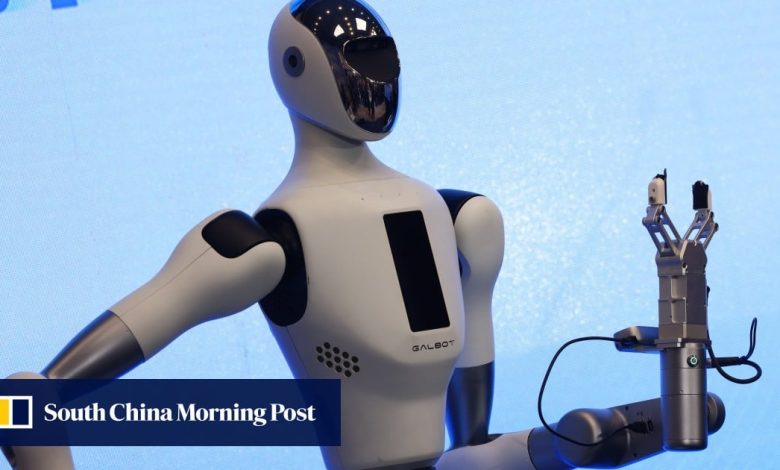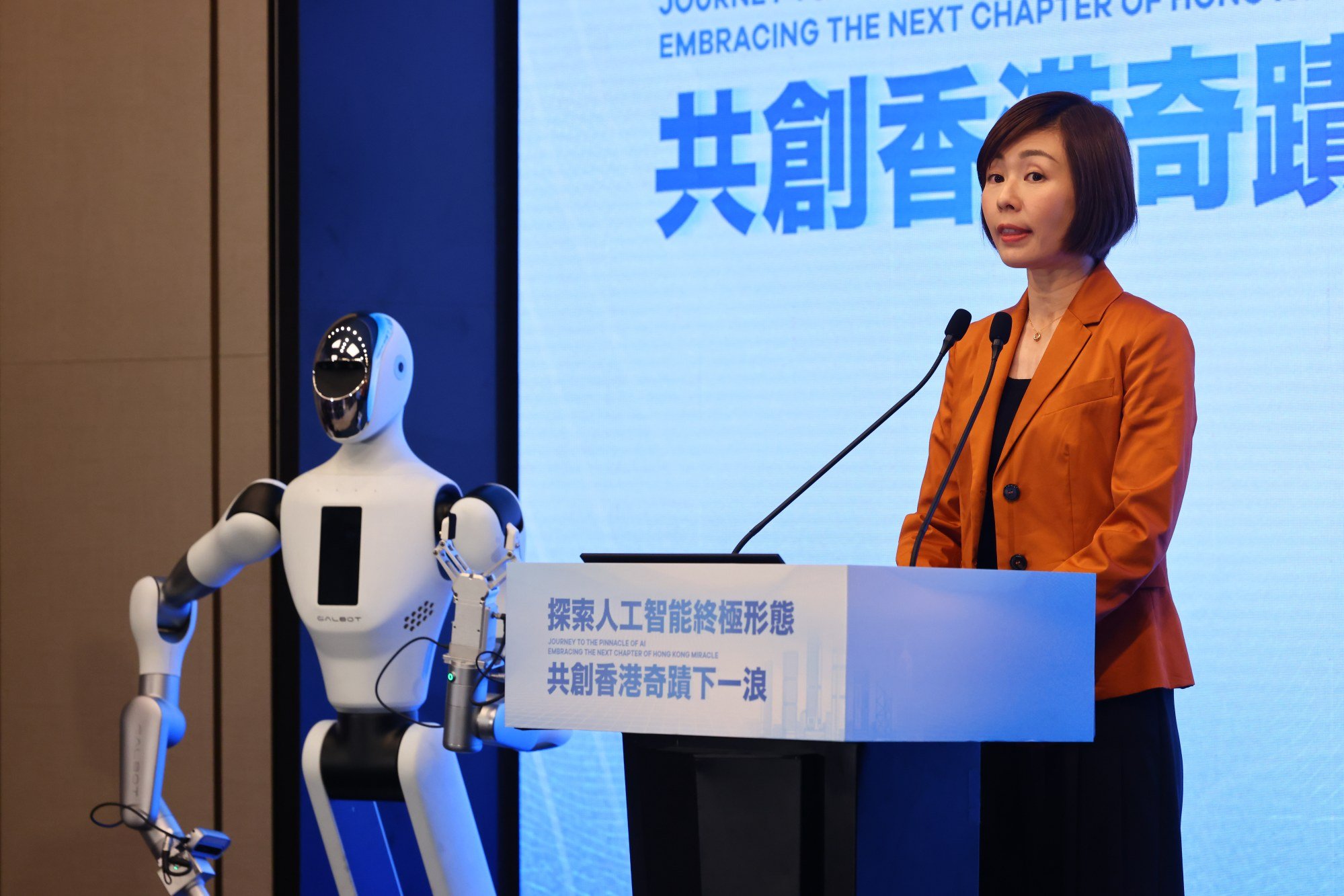Hong Kong fund strikes another AI deal with Beijing robot maker Galbot to boost industry

The deal will see Galbot establish a local entity called HK-Galbot Embodied AI Lab, and the company will explore applications for humanoid robots in Hong Kong with pilot projects in industries including retail and tourism, HKIC CEO Clara Chan said on Friday at a signing ceremony.
Galbot will also work with local schools to set up training programmes for embodied AI – which is integrated into physical objects so that AI systems can interact with their environments – and train more than 100 teenagers every year, Chan said.
A potential benefit of embodied AI, according to Chan, is that it can replace humans in performing dangerous and tedious tasks.

The year-old Beijing start-up, the third company chosen by HKIC to boost Hong Kong’s technology sector, will also prioritise Hong Kong as its destination for an initial public offering in the future, according to Chan.
“We believe that Galbot will participate in depth in building a robotics ecosystem in Hong Kong,” he said.
At a media briefing, HKIC’s Chan declined to disclose how much the government fund had invested in Galbot.
He Wang, an assistant professor at the Peking University’s Centre on Frontiers of Computing Studies in Beijing, founded Galbot in May of last year.
The Galbot G1 engaged with more than 800 visitors at WAIC, fetching objects more than 1,000 times with a success rate of 97 per cent, Wang said on Friday.
“AI currently focuses too much on abstract concepts but not on physical labour,” Wang said, explaining why Galbot is building human-shaped machines. “If we want AI to perform physical tasks, it can’t be just a computer, right? It needs arms, it needs hands, it needs legs; it requires a physical body.”
Galbot’s products could first be used in retail to perform actions such as picking out items from delivery orders and passing them to a delivery person, Wang said at the media briefing. The company plans to have its robots in some Hong Kong shops within the next year or two, with a large-scale deployment within five years, he said.

